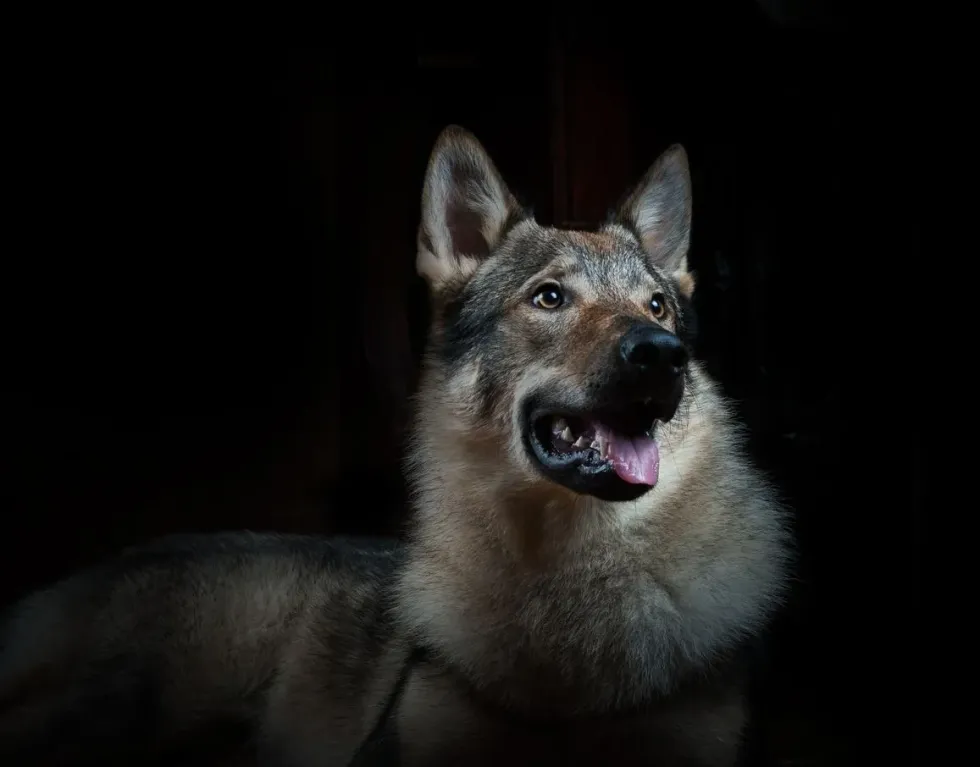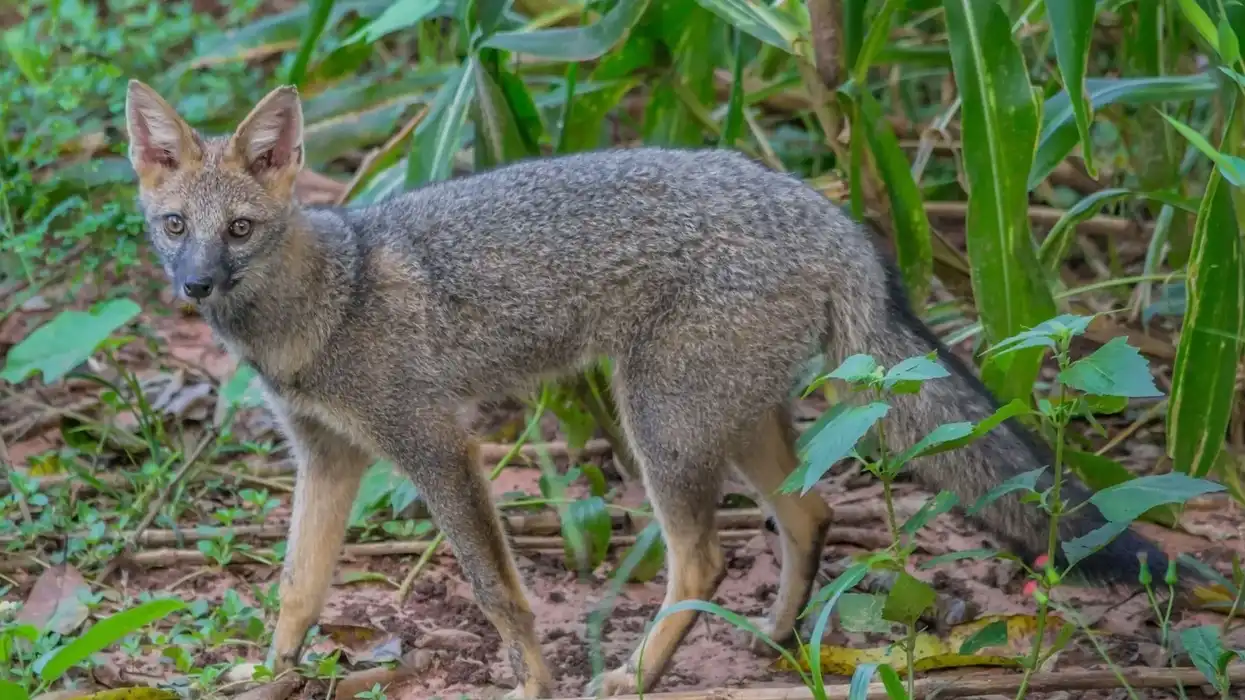The American Indian dog native to the US is an intelligent dog breed that originated from the United States and are also known as NAID. As per the native American Indian dog breeders, they can grow up to 23-34 in (58-86 cm) and weigh between 55-120 lb (24-54 kg).
Native American Indian dogs have stunning wild looks. The Native American Indian Dog is a feral breed that is rarely found in the wild. They have almond-shaped eyes that make them look attractive and seek the attention of others.
You need to be very calm and silent when you train American Indian dog puppies instead of being harsh. The Native American Indian dog also has another name, which is NAID.
The Native American dog’s intelligence is believed to be extremely high. They are highly trainable and are also eager to please their human companions. The Native American Indian dog is a beautiful dog that has a similar look to Siberian huskies, and also wolves.
They are mostly replaced by dogs of European descent. Native American Indian dogs suffer from some health problems like hip dysplasia. Taking care of a dog (Native American Indian) is very necessary, and giving them the proper nutrition is equally important for them.
After reading interesting facts on this dog (Native American Indian) breed, do check out our other articles on tundra wolf and Ethiopian wolf.
Native American Indian Dog Interesting Facts
What type of animal is a Native American Indian dog?
American Indian dogs are native to the US, they are dogs that have a strong, wolf-like appearance. Native American Indian dogs are often mistaken for wolves.
It is a dog that has upright ears and has an angular-shaped head like a German shepherd. Native Americans have a tail that is curl shaped like the Alaskan malamute or Siberian husky. They are a highly intelligent dog breed that are usually found with silver to black colored coats.
What class of animal does a Native American Indian dog belong to?
The class of animal that Native American Indian dogs belong to is mammals. Native Americans come from a rare breed of dogs that originated in the US. This rare breed has been recognized by the dog registry of America.
How many Native American Indian dogs are there in the world?
There is no accurate number and count as to how many Native American Indian dogs there are in the world. It is believed that the number of Native American dogs is declining due to different environmental factors and their surroundings.
Where does a Native American Indian dog live?
Native American Indian dogs usually live in fenced areas and houses with people who keep them as pets. They usually prefer to stay outdoors. They originated from South and North America. Native American Indian dogs usually prefer to stay in cold areas.
What is a Native American Indian dog's habitat?
Native American Indian dogs are not apartment dogs or even completely house dogs. Native American Indian dogs are dogs that need fenced-in areas where they can run, play and have fun. With help of positive reinforcement training, these dogs can be domesticated for all types of habitats.
Who do Native American Indian dogs live with?
Native American Indian dogs are native dogs that live with people indigenous to the Americas. Native Americans live with people who keep them as pets.
How long does a Native American Indian dog live?
Native American Indian dogs have a lifespan of 14 to 19 years. The life span of Native American Indian dogs depends on various factors, which include their surroundings, nutrition, habitat, and other factors that determine their living. If they fall sick and suffer from any disease or accident, then their life span could be cut even shorter.
How do they reproduce?
Male and female Native American Indian dogs mate together to give birth to babies. The female Native American Indian dogs give birth to between four to ten American Indian dog puppies. Breeders bring the male and female for mating in order to sell their babies once they are born.
What is their conservation status?
There is a considerable number of these dogs present across the world and as of now there is no concern regarding their conservation. It is a highly intelligent dog breed that can survive in most settings.
Native American Indian Dog Fun Facts
What do Native American Indian dogs look like?
Native American Indian dogs have very distinguishing features, which are their triangular-based head, pointy ears, muscular build, almond-shaped eyes, muscular build, and a curled tail. They have an overcoat which is made of rough long or short hair, and an undercoat of thick hair.

*Please note this is note a picture of a Native American Indian dog, if you have a picture of a Native American Indian dog, please let us know at hello@kidadl.com
How cute are they?
Native American Indian dogs are cute as well as gorgeous. They have majestic looks as well as great personalities. They have a sociable nature that will make you love them even more.
These dogs are very cute and very friendly in nature. Children get attached to them easily as they are friendly dogs. Native American Indian dogs look very attractive and have a very different wild appearance that is familiar to their ancestors.
How do they communicate?
They communicate by barking and might possibly show aggression towards strangers or unfamiliar dogs that enter their territory. They try to communicate by barking at their family members. They also growl, or use moans to communicate their message to others.
How big is a Native American Indian dog?
Native American Indian dogs are about 23-34 in (58-86 cm) tall and are big in size. They also come in standard sizes. A person who wishes to buy a Native American Indian dog can decide if they wish to buy a standard size or normal size.
How fast can a Native American Indian dog run?
Native American Indian dogs usually run fast, but there isn't any official estimate. Native American Indian dogs need to be taken care of. They need to exercise daily, and take brisk walks every day so as to practice running faster.
How much does a Native American Indian dog weigh?
Native American Indian dogs weigh around 55-120 lb (24-54 kg). Their weight differs according to their body structure. Some of them even weigh less according to the nutrition that is given to them.
What are the male and female names of the species?
The male and female name of the Native American Indian dog is the Native American Indian dog itself.
What would you call a baby Native American Indian dog?
A baby Native American Indian dog is called a puppy.
What do they eat?
Native American Indian dogs usually prefer to eat high-quality dry food, which is the best nutrition for them. They are also given dog food that includes chicken, bones and pedigree which helps to keep them strong.
Are they slobbery?
Yes, Native American Indian dogs are slobbery. They indulge their feelings in people whom they love and therefore tend to slobber around them.
Would they make a good pet?
Yes, Native American Indian dogs definitely make good pets. They are very good family pets and are friendly and loyal in nature.
They are an attractive breed and people love to play with them as they are playful in nature. They are sensitive in nature, and using a harsh tone on them is not necessary. They need a skillful trainer to train them in different activities.
Native American dogs are not well suited for small houses as they are not apartment dogs. They need homes that are big and spacious for them to play around in.
Did you know...
The exact details of Native American Indian dogs is still unknown. It is believed that they have a similar heritage to that of Dingo.
People usually mistake Native American Indian dogs for wolves because of their appearance. Native American Indian dogs have numerous names which reveal much about the places where the breed could be found. Native American Indian dog is also known to be a landrace.
Native American Indian dogs show admixture with other breeds which include some that come from Europe as well as far-off places. They are known as therapy dogs which are used to give therapy to patients.
As they are protective and loyal, they make perfect watchdogs for the family. Native American Indian dogs are highly sensitive for training but training them is a must.
Getting your own Native American Indian dog
Native American Indian dogs are trained to play a variety of roles and are also therapy dogs. They make a very good family pet. Since Native American Indian dogs are rare, they are expensive and cost between 1,200 and 2,000 USD. You can get them from people who breeds dogs or also from pet shops.
Comparisons with other wolf mixes
Native American Indian dogs might look like wolves and are wild in their appearance, but they are very gentle. The breeders say that it was two dogs that acquired Native American tribes.
After this, there were multiple wolf-like dog breeds that were introduced to the gene pool. The American Native Indian dogs have a wolf-like appearance and look similar to wolves.
When they bark, the sound is also like that of a wolf. The wolf hybrids or wolfdogs are the results of mating between a wolf and a domestic dog, and that is where the Native American Indian dog is domesticated from.
Here at Kidadl, we have carefully created lots of interesting family-friendly animal facts for everyone to discover! Learn more about some other mammals including Staffordshire bull terrier, or German shepherd pitbull mix.
You can even occupy yourself at home by drawing one of our Native American Indian dog coloring pages.
*Please note the main image isn't a picture of a Native American Indian dog, if you have a picture of a Native American Indian dog please let us know at hello@kidadl.com










